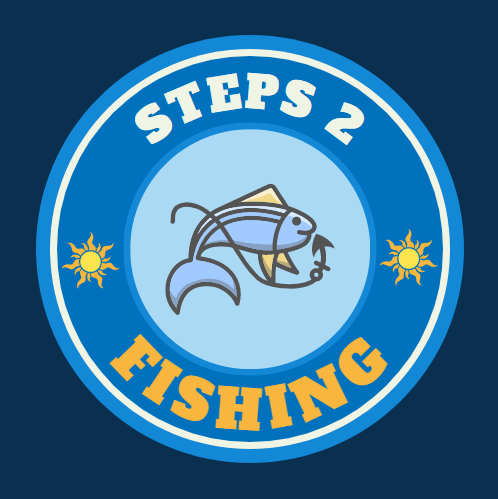Fishing enthusiasts always seek new and exciting techniques to enhance their angling experience. Deep drop rigs have emerged as a popular method for targeting deep water species that would otherwise be out of reach using conventional fishing methods. In this article, we will delve into the world of deep drop rigs, exploring their benefits, components, and techniques and offering valuable tips for successful deep drop fishing.
Named for their purpose, deep drop rigs empower anglers for deep-water fishing through specialized fishing setups they engineer. While traditional fishing methods possess limitations in reaching deep-water species, deep-drop rigs unveil an entirely fresh realm of angling possibilities. Engineers craft these rigs precisely to endure the extreme conditions and high pressures experienced at substantial depths.
What are Deep Drop Rigs?
Deep drop rigs are advanced fishing systems that allow anglers to fish at depths ranging from 500 to 1,500 feet or even more profound. The primary purpose of these rigs is to ensure that the bait reaches the desired depth, enticing target species that reside in the deep waters. Deep drop rigs offer anglers a chance to explore the mysterious depths and target species that are less accessible through conventional fishing methods.
Benefits of Using Deep Drop Rigs:
Increased Target Species Range:
One of the significant advantages of utilizing deep-drop rigs is the expanded range of target species. Many deep-water fish species, such as grouper, snapper, tilefish, and swordfish, reside in depths beyond the reach of conventional fishing gear. With deep drop rigs, anglers can venture into these deeper waters and increase their chances of landing prized catches.
Targeting Deep Water Species:
Deep drop rigs are specifically designed to cater to species that inhabit deep waters. These species tend to be larger and offer a more significant challenge and reward for anglers. Deep-water fishing presents a unique angling experience as these species’ behaviour, feeding patterns, and habitats differ significantly from those in shallower waters.
Versatility and Adaptability:
Deep drop rigs offer versatility and adaptability to various fishing situations. Anglers can customize the components of the rig based on factors such as water temperature, current speed, and the behaviour of the target species. The weight, leader length, and hook size can be adjusted, ensuring the rig is perfectly suited to the fishing conditions and the angler’s preferences.
Components of a Deep Drop Rig:
To construct an effective deep drop rig, it is essential to understand the key components and how they work together to create a successful setup. The following are the primary components of a deep drop rig:
Weight: The weight, typically a lead sinker, is crucial in ensuring the bait reaches the desired depth. The weight must be carefully selected based on the depth being targeted and the strength of the current.
Main Line: The main line is the primary line that connects the rig to the fishing reel. It should be strong enough to handle the rig’s weight, the deep-water environment’s strain, and potential battles with large fish.
Leader Line: The leader line is a section that connects the main line to the hook. It is typically made of a more robust and abrasion-resistant material than the main line. The leader line serves as a protective barrier against the sharp teeth and rough mouths of deep-water species.
Hooks: Selecting the appropriate hooks is essential for deep-drop fishing. The hook size and style should match the target species and the type of bait being used. Circle hooks are commonly preferred as they increase the chances of a secure hookset.
Bait: Choosing the right bait is critical in enticing deep-water species. The bait should be attractive, durable, and capable of withstanding the pressures of the marine environment. Popular bait options include squid, cut fish, octopus, and artificial lures designed specifically for deep-drop fishing.
Techniques for Deep-Drop Fishing:
Successful deep-drop fishing requires mastering specific techniques. Here are some essential techniques to improve your chances of landing that prized catch:
Setting Up the Rig:
Electrical Reels: Deep drop fishing often involves dropping the bait to significant depths. Many anglers use electric reels to make this process easier and more efficient. Equipped with powerful motors capable of handling weight and depth, these reels enable anglers to drop and retrieve their lines with minimal effort.
Multiple Hook Setups: Another technique is to employ multiple hooks on a single rig. By using multiple hooks, anglers can present a variety of baits at different depths, increasing their chances of attracting fish and potentially targeting different species simultaneously.
Choosing the Right Location:
Bathymetric Charts: Before embarking on a deep drop fishing excursion, it is essential to study bathymetric charts of the target area. Bathymetric charts provide valuable information about underwater topography, including drop-offs, canyons, and reefs. Identifying potential hotspots on the charts can significantly enhance your chances of locating productive fishing grounds.
Researching Fish Behavior: Understanding the behaviour and feeding patterns of the target species is crucial for successful deep-drop fishing. Some species may be more active during specific times of the day or exhibit preferences for particular structures. By conducting thorough research, you can narrow down the best locations and times for deep-drop fishing.
Dropping the Line: Slow and Controlled Descents: When dropping the line, it is crucial to do so in a slow and controlled manner. Allowing the bait to descend naturally and attract fish is key. Avoid free-falling the bait, as it may tangle or scare away potential targets. Maintain a steady pace while dropping the line, ensuring it reaches the desired depth.
Using Glow Sticks: Deep waters can be dark, making it challenging for fish to spot your bait. Attaching glow sticks to the rig or using glow-in-the-dark baits can help attract fish. The luminescent glow creates a visual stimulus, making your bait more visible and enticing to deep-water species.
Maintaining Tension and Sensitivity:
Slight Line Tension: Keeping a slight tension on the line is crucial for detecting subtle bites. Deep-water fish often bite delicately, and without tension, these bites can go unnoticed. Maintain a gentle tension to feel even the slightest nibble and promptly react to hook the fish.
Using Sensitive Rods: Investing in a sensitive fishing rod designed explicitly for deep-drop fishing can significantly enhance your angling experience. These rods are designed to have increased sensitivity, allowing you to detect the faintest bites. The heightened sensitivity enables you to react quickly, improving your hook-up rate.
Tips for Successful Deep Drop Fishing:
To maximize your chances of success when using deep-drop rigs, consider the following tips:
Research Target Species: Familiarize yourself with the target species’ behaviour, feeding patterns, and habitat preferences. This knowledge will help you choose the right bait, location, and techniques to attract and land your desired catch.
Adapt to Changing Conditions: Dose fishing can be influenced by current speed, water temperature, and weather conditions. Stay adaptable and adjust your rig, bait selection, and fishing approach to accommodate these changing circumstances.
Use Quality Equipment: Invest in reliable and high-quality fishing gear, including rods, reels, and lines. Deep-drop fishing can put considerable strain on your equipment, so it’s essential to use durable and robust gear that can withstand the pressures of the deep-water environment.
Stay Patient: Deep-drop fishing requires patience and persistence. It may take time to locate productive fishing grounds and entice bites from deep-water species. Stay focused, maintain a positive attitude, and be prepared to put in the time required for a successful deep-drop fishing trip.
Conclusion:
Deep drop rigs offer anglers an exciting opportunity to explore the depths and target elusive deep-water species. By understanding the components of a deep drop rig, mastering the techniques, and employing effective strategies, you can increase your chances of landing impressive catches in the deep waters. Remember to adapt your approach based on the specific fishing conditions and target species you’re pursuing, and always prioritize safety and conservation. So, gear up, embrace the challenge, and embark on a thrilling deep-drop fishing adventure.
FAQs:
1. Are deep drop rigs suitable for beginners?
Deep drop fishing can be more challenging than traditional fishing methods and may require some experience and knowledge of fishing techniques. However, with proper research, practice, and guidance, beginners can enjoy deep-drop fishing.
2. What types of fish can be targeted with deep drop rigs?
Designing to target various species, deep drop rigs encompass grouper, snapper, tilefish, swordfish, and other deep-water species renowned for their size and fighting capabilities.
3. Can I use artificial lures with deep drop rigs?
Yes, you can use artificial lures designed explicitly for deep-drop fishing. These lures often mimic the appearance and movement of natural baits and can effectively entice deep-water species.
4. Is deep drop fishing only possible from a boat?
Deep drop fishing is primarily done from boats due to the depths involved. However, specific locations may offer opportunities for shore-based deep-drop fishing, such as fishing from piers or other elevated structures.
5. How can I ensure the safety of the deep drop rig setup?
Regularly inspect your deep drop rig components for wear and tear, ensure proper knot-tying techniques, and handle the rig with care to prevent tangles and damage. Following safety guidelines and practicing responsible fishing practices is crucial for the overall safety and conservation of the marine environment.


Leave a Reply